by The History Chicks | Mar 8, 2013 | Biography Episode, Episode, News, Podcasts, Shownotes
Once a season we step away from factual subjects and focus on a fictional one. This season we traveled to the land of Oz and took a look around.
“But Chicks,” you say,”a Wizard is a man.”
To that we respond: Thank you for pointing this out. Yes, the Wizard is a man, and L. Frank Baum is a man…but Oz is full of women! Dorothy! Glinda! Ozma! Oz is a land of female rulers and strong charactered inhabitants- how could we not talk about it? (Besides, we like fantasy, okay? And there are several points in the Six Degrees of History Chicks Separation game with this subject. Just trust us.)
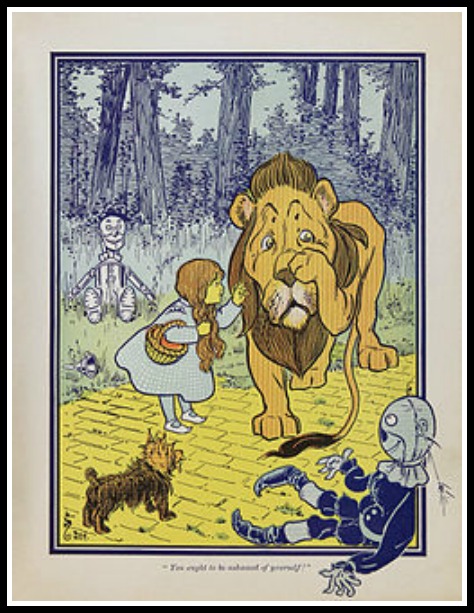
W.W. Denslow illustration from The Wizard of Oz by L. Frank Baum
We’re sure several images popped into your head when you saw the title, and we will cover most of them in this episode…except three: Judy Garland, Billie Burke and Margaret Hamilton. We decided to have a separate conversation about the lives of the three female stars of the 1939 movie . That chat will be posted as a companion minicast .
In 1900 L. Frank Baum introduced the world to the imaginary land of Oz. It wasn’t the first children’s book that he had written-but it would become a series that he would work on for the rest of his life that is full of characters, settings and storylines that are still being explored today.
Born in 1856 in Chittenango, New York, Lyman Frank Baum was the son of a barrel maker and occupational experimenter who struck it rich in the oil business- Benjamin Baum and his wife, Cynthia Stanton Baum. Frank was a sick child with a weak heart but a big imagination. He also had the gift of very indulgent parents.
Aside from a short stint at Peekskill Military Academy (where there was, literally, a yellow brick road), Frank was educated at home by tutors and parents who helped him peruse any interests he had. When he took an interest in the printing process, his parents bought him a home printing press. Later when he took an interest in acting, they got him a theater.

Franks brief experience in a military school…not exactly his thing
Once grown, he began touring with an acting company until he met Maud Gage- daughter of Elizabeth Cady Stanton’s co-author Matilda Jocelyn Gage. Love. Within a year they were married, and when she became pregnant with the first of four sons, the acting life ended and Frank the dreamer needed to become Frank the supporter.
He did not find success as a chicken breeder, store owner, newspaper man, or traveling salesman. One day he wrote out the Mother Goose rhymes that he had been sharing with his sons and they became his first book- Mother Goose in Prose. His second was a spin-off of that one, Father Goose: His Book.
Shortly after these two successes, he wrote down the stories he had been telling his sons and the neighborhood kids about a little girl named Dorothy in a magical land named Oz. With clever illustrations by W.W. Denslow, The Wizard of Oz was a hit.
Frank brought the story to the theater with a stage version ( although the adult cast wasn’t exactly what he had in mind when he wrote the story), and this also was a success. While he had no interest in writing another Oz book, he did have an interest in putting food on the table for his family. Frank Baum was an imaginative writer, but a businessman he was not and he would earn and lose his wealth many times over the years. Within four years of the first Oz book he was publishing a second. He would write 13 sequels to the original story (including our favorite- Ozma of Oz).
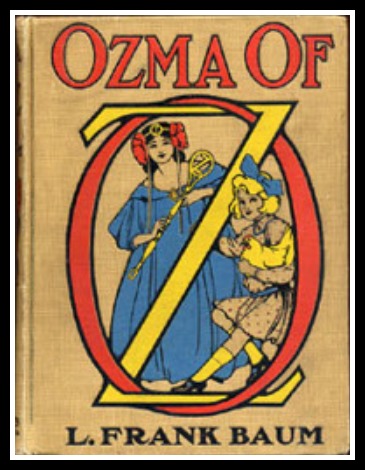
Shh, don’t tell the others, but this is our favorite
But that’s not all! Frank wrote several books and plays under pseudonyms and several of those were women’s names- the most successful being a series for teenage girls, Aunt Jane’s Nieces, under the pen name, Edyth Van Dyne.
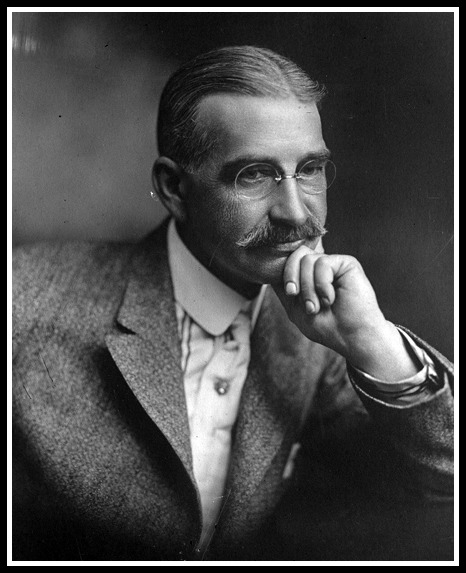
L. Frank Baum circa 1911
Frank Baum died on May 6th, 1919 at the age of 92. His last book, Glinda of Oz, was published posthumously a year later.
But the Oz books couldn’t end! Not only was the world enthralled with the story, it was making some serious coin for its publishers. After Frank’s death another 36 books would be written by a variety of authors making up what is considered the official 40 book Oz series.
About 38 years down the yellow brick road technology caught up with the stories. After Walt Disney scored big time with Snow White, movie makers were looking for the next big fairy tale and MGM landed Oz. We geek out about the making of this iconic movie for quite a while during the podcast. We chat about trivia as well as the differences between the movie and the beloved books (Like the shoes: Dorothy originally was gifted a pair of silver shoes, but red showed up so much nicer in Technicolor.)
2.6 million dollars, five directors, scores of writers, two Tin Man actors, and a shooting schedule that stretched from 6 weeks to 23 The Wizard of Oz finally opened…
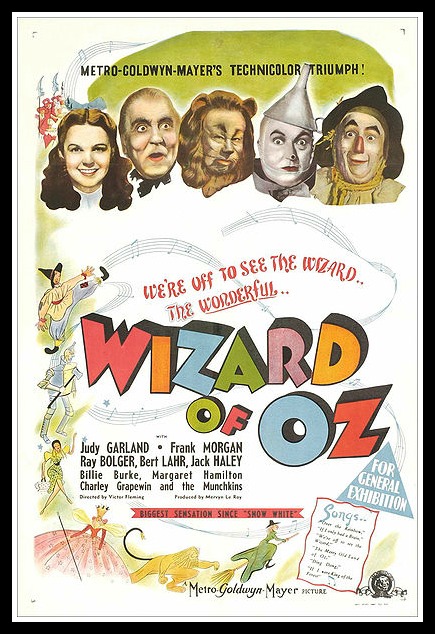
Not the first technicolor movie by a long shot and didn’t follow the books exactly (and we cover those differences in the podcast), 1939 MGM movie poster
…and didn’t quite do as well at the box-office as you would have expected. While this film lasts on mostly due to annual televised showings beginning in the mid 1950’s- the movie wasn’t a flop by any standard, but it did originally fail to be a financial success. The movie did win two Academy Awards as well as a special award for 16 year-old Judy Garland.
TIME TRAVEL WITH THE HISTORY CHICKS
So you really don’t want to read all the books in the Oz series, we get that- 40 is a lot of books. Here is a really fun shortcut to the plots and characters of each book as well as all the original cover art to them. Maybe after you read these reviews you will give in and get one of the books. And another. And another. Hey, fantasy series are all the rage these days- there is a reason and Oz started them all. Mari Ness on TOR.COM
Other than the books in the Oz series, we didn’t have a lot of recommendations for this episode. We think that the Annotated Wizard of Oz was pretty terrific, as well as the Wicked Years series by Gregory McGuire and Was by Geoff Ryman (very dark, but very good).
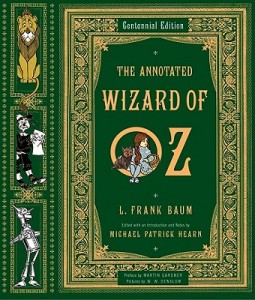
Annotated Wizard of Oz edited by Michael Patrick Hearn

Was by, Geoff Ryman
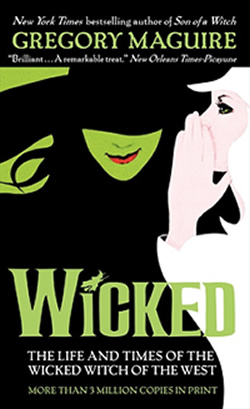
The Wicked Series by Gregory Maguire (also available on Audible.com and you can get a free book just by clicking the link to the far right, no, up higher…just sayin’)
And as far as movies go, get thee to the library and borrow the 3 -disc Collector’s Edition of the 1939 movie! So many special features you will be all Oz’d up in no time!
1978 brought a very interesting version of movie (it had previously been an Tony award winning Broadway play) The Wiz starring Diana Ross and Michael Jackson. Make your own judgement if it’s destined for Cult Movie Classic status or not.
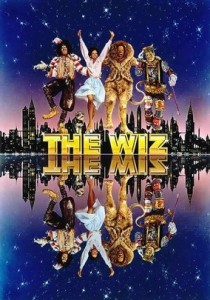
1978 musical The Wiz
You can catch Tin Man, the Sci-Fi channel mini-series starring Zooey Deschenel, streaming on Netflix and decide if you think it’s good (and forgive Zooey for this one) like Susan, or if you can’t get past the first episode like Beckett.
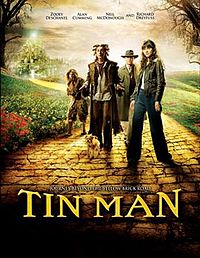
Classic Oz touches sprinkled through story in semi Once Upon a Time style
Join in the serious business at the International Wizard of Oz Clubs, or join some chat with the Royal Historians and all at The Royal Website of Oz.
The Studio 360 podcast episode “American Icons: The Wizard of Oz” can be found here, or on ITunes: Studio 360
Want to read the rest of the Evil Overlord list? Find it here: The Evil Overlord List
Investigate your name’s popularity over time at The Baby Name Wizard (warning! It’s addictive!): Baby Name Wizard
Finally, there are a pair of the Ruby Slippers Judy Garland wore in the movie at the Smithsonian, but if you are looking for an Oz museum as you cross Kansas, here is one in Wamego, Kansas ( just east of Manhattan). We have not been, but if you have let us know how it is in the comments!

On display in Washington, one pair of the movie ruby slippers
As always, our music comes courtesy of Music Alley. Visit them at music.mevio.com
(closing song – If I Only Had a Brain by Elijah Tucker)
by The History Chicks | Feb 13, 2013 | Biography Episode, Episode, Podcasts, Shownotes
Before there were suffragists to march and fight for the vote, there was Elizabeth Cady Stanton. Before she teamed up with another superhero for women’s rights, Elizabeth was a daughter, a sister, a wife, and a mother. Then, one warm summer day in 1848 in Seneca Falls, New York she stood up, gave her first public speech and helped to start a movement.
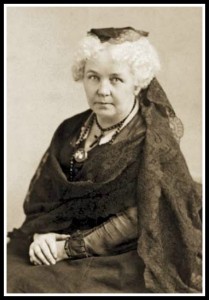
Elizabeth Cady was born in November 12, 1815 in Johnstown, NY. She was the eighth of eleven children of Daniel- a lawyer and judge- and Margaret Cady. All but one of their sons died in infancy and Daniel’s hope rested on his surviving son, Eleazar. That hope was crushed when he, too died at the age of 20. Elizabeth, then 11, couldn’t understand why she couldn’t fulfill the hopes of her father who said to her, “I wish you were a boy.”
She tried- she rode horseback and tried to do “boy” activites. She studied hard and excelled academically but there was one thing that she couldn’t control and it was the one thing that held her back: her gender. Once she exhausted the educational options that she had, Elizabeth became involved in the Abolitionist and Temperance movements and began down a pretty traditional path when she married Henry B. Stanton.
Well, sort of traditional- except that she and Henry, a Reformer working to abolish slavery, took the word, “obey” out of the traditional vows, and their first voyage after marriage was to London for a World Anti-Slavery Convention. How’s that for a honeymoon? Of course, there is a lot more to the story (A LOT- we tell you this every time, you have to listen to the podcast to get all the juicy bits)- but while in London Elizabeth’s eyes were opened to several things. The one that impacts this tale, is the way that women were treated- even delegates at the convention who were female were not allowed to participate in any more than an observational role. She also met some rock stars in the human rights arena but during her time not participating in the proceedings, she and Lucretia Mott- a Quaker preacher who was very active in the anti-slavery movement- formed a friendship that would have a significant impact on Elizabeth’s life in a few years.
But first Elizabeth lived the married life of the wife of a lawyer in Boston. She had three children in short order and set up housekeeping in the city. She enjoyed her life a great deal- hello!- she was hobnobbing with the likes of Nathaniel Hawthorne and Ralph Waldo Emerson. But all good things must end and the family moved to Seneca Falls, NY (upstate, to the left- about halfway between Albany and Buffalo). In this new phase of her life she wasn’t as content as she had been in the city. She kept having babies (seven in total), but lacked the staff , support and outside interests that she had in Boston. Henry traveled a great deal as an anti-slavery lawyer and politician- and Elizabeth got caught up in the drudgery of small town life.
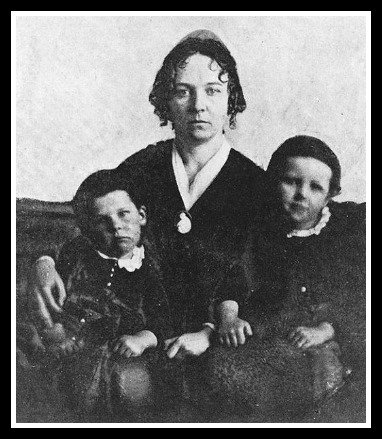
Elizabeth and two of her boys around the time of the First Women’s Rights Convention
One day, her old friend Lucretia Mott came to town and Elizabeth was invited for tea with her. Shortly after this the women present had created, advertised and were holding the First Women’s Rights Convention in Seneca Falls (if this story is new to you, THIS is one of the historical turning points that President Obama was referencing in his 2013 inaugural speech). In front of an audience of about 300 people who had packed into the Wesleyan Chapel Elizabeth wrote and delivered her first public speech ever, the Declaration of Sentiments based on Thomas Jefferson’s Declaration of Independence. The points outlined in the speech were designed to create laws that protected women and put women on equal footing legally with men. And the biggie? The right to vote.
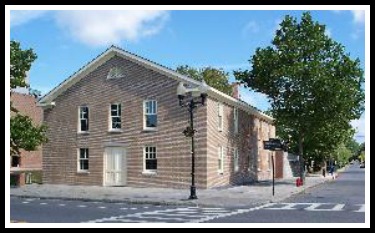
Now part of the Women’s Rights National Park, the Wesleyan Chapel held the first Convention. (photo courtesy nps)
From where we are sitting suffrage for women seems like a no-brainer, but in this time it was fairly scandalous. Women at the time were not considered intelligent enough to sit on a jury, let alone own property, have a legal say in the welfare of their own children, or help to decide the government of their own country. 100 people signed the Declaration that day, mostly women but some men- vowing to do what they could to create change. Elizabeth, however, was torn. She was becoming rather famous for her speech but she felt strong devotion and loyalty to her family. How could she help the cause when her primary responsibilities required her to stay home?
Enter one Susan B. Anthony. The two met one day and not only was a friendship formed- but a partnership. Elizabeth could write the words, and Susan- who was single and not tied to family obligations- could travel to deliver them. Elizabeth would later say, “I forged the thunderbolt, she fired it.”
For the next 50 years the two would work together on the cause of women’s rights.
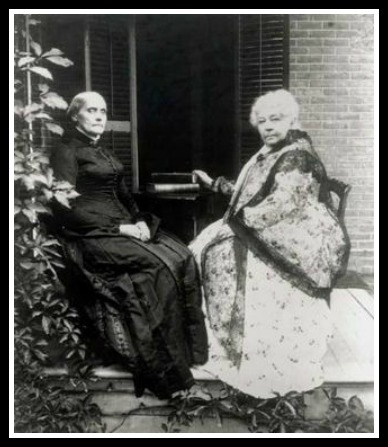
Susan B. Anthony and Elizabeth later in life, they even look like the opposites that they were, don’t they?
It wasn’t easy, and they would often disagree. For instance, at one point Susan thought that the sole mission should be to get women the vote, while Elizabeth thought more broadly to religious and legal freedoms. But work together they did. For the most part, Susan did the leg work and Elizabeth did the brain work. But often Susan would travel to Elizabeth’s home and help out with domestic chores so that new speeches could be written.

The mahogany table that the women would work at at Elizabeth’s house and where Elizabeth wrote the Declaration. It later was at her funeral.
During that time they put in years of hard work, devotion, standing up for what they thought was right all with a goal of women’s suffrage in their minds and actions. It’s a long story and we go into some detail during the podcast, but it is filled with success and failure; determination and drive; support and alienation from those who they encountered; work for not only women’s suffrage but temperance and abolition, too. Elizabeth did it all while raising her family without much help from her traveling husband.
As the two women slowed down, just a bit- they got together to document the tale of the work done thus far in a book that would take years to write- The History of Women’s Sufferage. Susan managed to vote in an election, although she was famously arrested, charged and fined $100 for her attempt. Elizabeth spoke throughout Europe and caused quite a ruckus when she re-wrote the Bible into The Women’s Bible offering counter-discussions for time honored interpretation of scripture from Genesis to Revelation. She also wrote her memoirs, Eighty Years and More. Together they wrote a document and got it into the rights hands to be presented to Congress. This little document, very short, but very important, would be presented in every session for the next 45 years.
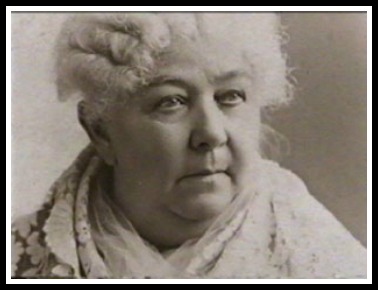
On October 26,1902, Elizabeth was 86 years old and living in New York City with her daughter. She was losing her eyesight and in constant need of physical assistance. She asked for assistance to stand, took in the view for several minutes, then was instructed by her family to sit she lay down and took a nap. That day she died in her sleep.
Susan would carry on the fight for the next four years, dying in 1906.
In 1920 the document that they had prepared was finally ratified and became the 19th Amendment to the Constitution granting women the right to vote.
TIME TRAVEL WITH THE HISTORY CHICKS
Companion podcast! Beckett reads the Declaration of Sentiments in a companion podcast. CLICK HERE .
Museum! If you happen to be near Seneca Falls, NY, you have to (have to…must, really!) visit the Women’s Rights National Historic Park. There are four properties including Elizabeth’s house and the Wesleyan Chapel where the first Women’s Rights Convention was held.
If you are interested in reading some of the works of Elizabeth Cady Stanton, try The Papers Project or the National Archives Teaching with Documents site. A History of Women’s Suffrage and The Women’s Bible are in the public domain and can be read through Project Gutenberg.
One of the organizations that Elizabeth helped to found and was the first president, The National American Women’s Suffrage Association morphed after the 19th Amendment into the League of Women Voters and is still an active organization today.
THE 19th Amendment!
Movies- we recommend this one Ken Burn’s documentary that is streaming on Amazon (Or get it from your library), Not For Ourselves Alone: The Story of Elizabeth Cady Stanton and Susan B. Anthony.
Books!
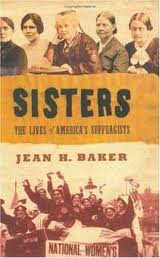
Sisters: The lives of America’s Suffragists by Jean H. Baker
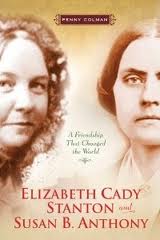
Elizabeth Cady Stanton and Susan B. Anthony: A Friendship That Changed The World by Penny Colman
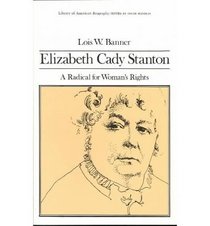
Elizabeth Cady Stanton: A Radical for Women’s Rights by Elizabeth Griffith
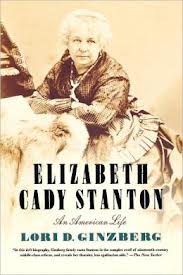
Elizabeth Cady Stanton:An American Life by Lori D. Ginzberg
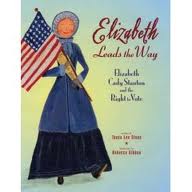
Kid’s book Fave: Elizabeth Leads the Way by Tanya Lee Stone illustrated by Rebecca Gibbon
And finally, Elizabeth is in this book- but so are many others, but it’s just a great read (and if you have anyone else attributed to this quote than the author of this book on your Pinterest boards- go change it now!)
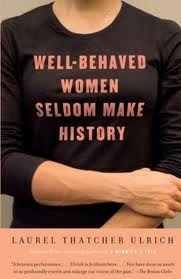
Well-Behaved Women Seldom Make History by Laurel Thatcher Ulrich
Susan here. I stand corrected. The dance that my kids learn in physical education not history class in middle school is the Cotton Eyed Joe. Not necessarily a Missouri dance but one that originated in the south prior to the Civil War with probable slave origins. I still think it’s wonderful that a folk dance is taught, and remembered in this day and age. Take that Cupid Shuffle and we’ll see where you are in 150+ years.
As always music comes courtesy of Music Alley. Visit them at music.mevio.com
by The History Chicks | Jan 13, 2013 | Biography Episode, Episode, Podcasts, Shownotes
Josephine Baker is often remembered simply as the woman who danced wearing nothing but a skirt of bananas in Paris during the 1920’s. But her life was far from simple. She was not only a dancer and singer, but also a spy, a civil rights activist and a mother. She reinvented her life by sheer will and wits so many times that it’s not surprising that there are as many variations to her tale as there were roles in her life.
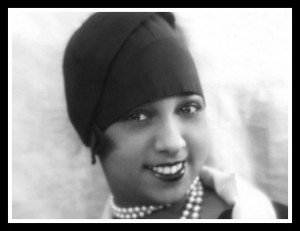
A young Josephine Baker
When we sat down to talk about this unique woman, we went a little long. Josephine wrote several auto-biographies- each painting a slightly different picture of her life. Several more biographies were written after her death- each giving slightly different details. Once we began our chat, we often ran into conflicting stories…it was so cool! Did she or didn’t she? Was she or wasn’t she? So many versions!
History rocks. It really does.
***And the story of Josephine’s life is also a little racy, parents may want to preview the podcast first it to decide if it’s age appropriate for their kids.***
We have divided our conversation into two parts, and the show notes into acts. She was different from anyone in her generation (although she reminded us of several woman since) it seems fitting that our coverage of her life should be a bit different as well.
ACT ONE: A CHILDHOOD OF POVERTY
(Open on a poor, urban neighborhood in 1906)
On June 3, in St. Louis, Missouri Freda Josephine McDonald was born to Carrie McDonald. Listed as her father on her birth certificate:”Edw”. Mysterious! The father of record is Eddie Carson, a drummer who Carrie had spent a great deal of time with. Eddie would deny his role in the life of the baby who her mother nicknamed, “Tumpy”. To deepen the paternal mystery- Carrie was very dark skinned, and Josephine was quite light. Even her birth had enough gaps to allow various tales to emerge. Hold on tight for the rest of her life!
We know this: She was born into poverty and lived in poverty for her entire childhood. Mama Carrie would pass Josephine back and forth between Grandmother Caroline and Aunt Elvira and Carrie’s home. As always we go into greater detail during the podcast, but Carrie soon married Arthur Martin and the couple would have three more children. Carrie worked as a laundress, Arthur worked at whatever he could whenever he could, but the family was never able to dig themselves out of poverty.
Josephine was sent to school, but she didn’t attend for long. Some times she was shipped off to work for families other times, as she got older, she would simply skip class. When she was ten, race relations is St. Louis heated up and resulted in a serious time of rioting.
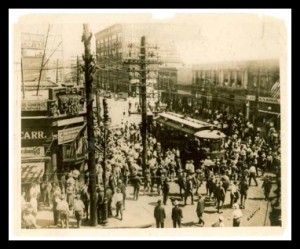
A trolley in East St. Louis is blocked by rioters in 1917
While East St. Louis burned during the riots, Josephine was safely on the OTHER side of the city. But the event most probably impacted her life, having such hatred and danger within walking distance would have to have been frightening.
At the age of 13, Josephine had her first marriage to Willie Wells, a steelworker. This didn’t last long, something about Josephine faking a pregnancy…or maybe being pregnant and having an abortion led to Willie leaving and never returning.
ACT TWO: BIRTH OF A SUPERSTAR
(Open on a young Josephine staring wistfully at an old, run down but still operational theater)
So maybe marriage wasn’t Josephine’s ticket out of her sad family life. She had been drawn to the theater, most specifically the Booker T. Washington Theater. There she would watch and imitate the acts, then take what she had learned outside to entertain patrons waiting for a show to begin. Eventually she worked her way into a dance troupe called, The Dixie Steppers.
With this troupe she would eventually go on the road, performing all over the south-eastern portion of the US and then heading north to Philadelphia, Pennsylvania.
By the time Josephine reached Philly she had begun to create the comedic moves and offstage persona that would take her far.
But first, she had to get married again. This time the man, Billy Baker, gave her a small moment of familial stability and the last name that she would use for the rest of her life.
While Josephine had been taking steps up the performance ladder she kept her eye on the next level. With a few fancy moves of her own, the untrained dancer earned a spot on the first all-black show that played on Broadway, Shuffle Along.
So long, Philly and so long Billy!
In New York, and traveling throughout the country with the road show, Josephine honed her craft to the best of her ability, although was probably a choreographers nightmare. She was not only an untrained dancer, but her style included rolling her eyes, making funny faces and breaking into the dances of the age. While the audiences loved her comedic antics, the rest of the cast wasn’t amused about being upstaged. Another challenge for her was the color of her skin. Too light for some chorus lines, too dark for others.
Josephine moved to other shows when Shuffle Along closed, and was a prominent figure in the Black Renaissance of Harlem during the early 1920’s. She watched other successful acts, added (read:stole) new material for hers and worked more on her off-stage diva persona. She would strut around the streets and in after-hours clubs in increasingly outlandish outfits making sure that she was seen by as many eyes as possible. She dated as many men as she could, and worked day and night to develop a wild and exotic image.
In modern vernacular- she was establishing her brand.
Through another series of situations where she saw an opportunity and clawed her way to it, 19 year-old Josephine was soon cast in a new show being produced by an American named Caroline Reagan who wanted to bring the flavor of the Black Renaissance and American Jazz…to Paris.
(Montage to show almost overnight success of rising American chorus girl to Superstar in Paris)

Josephine entertains Parisians with exotic American dances like The Charleston and other truly exotic routines
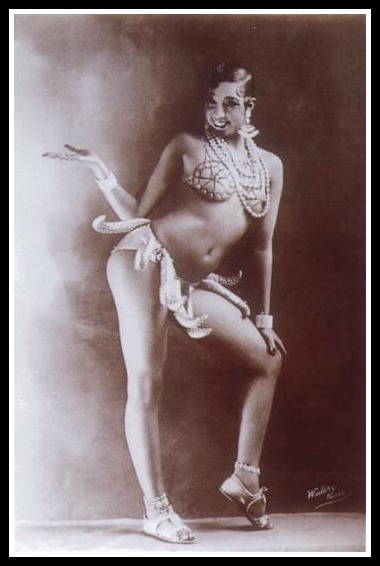
Josephine shows off the costume (plus a bikini top that she wouldn’t have been wearing on stage) for her famous Banana Dance
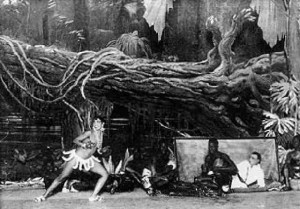
The set for her Banana Dance
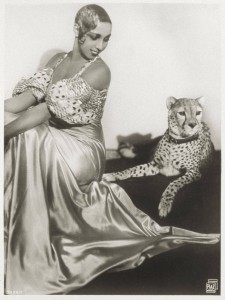
An almost overnight sensation, Josephine’s offstage and onstage personas melt into one bright, exotic superstar. Here with her pet cheetah, Chiquita
How did she climb so far, so fast in a country where she could barely speak the language? Partially because she was an exotic act to them from her first step on stage- they hadn’t seen anything like her and her charisma and antics won them over. Partially because she was willing to reinvent herself as audiences bored of her act. Partially because she was bold and brazen and very little frightened her. And partially because of a man she met early on in her days in France- “Count” Pepito de Abatino. Pepito was as much of a Count as Josephine was- that is to say, not at all. But when she paired up with him as her manager (and lover and fake husband) she began to soar. Paris couldn’t contain her so she toured all through Europe and South America causing both scandal and admiration as she did.
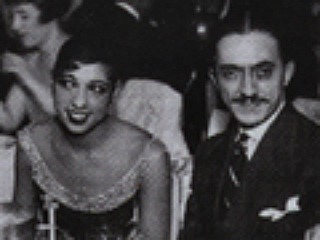
Josephine and Pepito, Paris circa 1927
Josephine was huge in a great portion of the world, but her native country had yet to embrace her. Ten years after Pepito took her career to a level she had never imagined, he took her someplace that she dreamed of taking like she had Europe. He got her a booking in America. Could Josephine become a superstar on her native soil? Would her own country shun or warmly welcome her arrival?
*INTERMISSION*
TIME TRAVEL WITH THE HISTORY CHICKS
We will post all of our book and media recommendations in Part Two, but thought you might like a select YouTube tour of Josephine’s life. All of the videos are PG -rated and will let you see her talent, her beauty and how she progressed through the years.
BANANA DANCE- Yes, we know- this is what you want to see and here is a version with a top on. Just watching this one video, we quickly saw what it was, that X factor that she possessed that drew people to see her. Lookit those bananas move!
From silent film 1927- This clip shows you her facial expressions and dance style- the moves that got her noticed even with no formal training.
Princess Tam Tam 1935– This is a short clip from one of her movies. She appears first at about 2:30, but the stage show is fun to watch.
Cha Cha circa 1950 – This is Josephine later in life, singing. She’s come a very long way (Baby) from the young banana dancer, don’t you think? Don’t Touch my Tomatos, and Cha Cha
Short interview with her later in life (SPOILER ALERT: This covers material in Part Two- it happened, you can read all about it, but we didn’t want to spoil it if you are waiting for us to tell you the story). This is in French. So you don’t speak french, so what? Just watch and hear her own voice talking in the language of her adopted country. She is watching Bridget Bardot speak on her behalf from her home in the early 1960’s.
As always, music comes courtesy of Music Alley. Visit them at Music.mevio.com
by The History Chicks | Apr 7, 2012 | Biography Episode, News, Podcasts, Shownotes
Imagine that you followed your heart to live an honest life doing what you felt was right: working hard, marrying for love, aiding others, traveling and always, always learning. You were a wife, a mother, a socialite, an activist, a suffragist, and a citizen of the world. You were adored by many, inspired more and lived life in the fullest, kindest way that you could imagine. And, when you died, your impressive life story was altered to one that was almost beyond recognition. Often for the worse!
That’s what happened to Margaret Tobin Brown. You might know her as Molly Brown- the Unsinkable Molly Brown. A woman whose real life story was so much more impressive than the one that was assigned to her after her death.
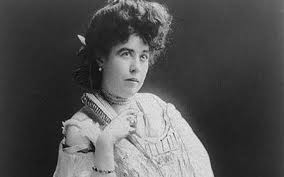
That’s a fan, not a pick ax! Margaret Brown: socialite, activists. mother, strong and educated woman. Not an uneducated gold digger.
Margaret Tobin was born a middle child of John and Johanna Tobin in Hannibal, MO on July 18, 1867. Her parents had ridden a wave of Irish Catholic immigration during a Potato Famine and landed in this western railroad stop of a town . John worked as a laborer for a variety of businesses while his children attended school and played in the same woods as another Hannibal resident had years before: Samuel Clemens.
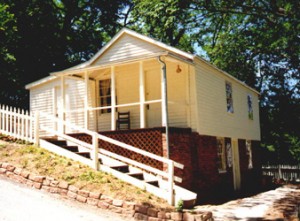
The reconstructed Tobin family home in Hannibal, MO
The Tobin children had no more, and no less, than most of their neighbors. It was a frugal childhood, but not the miserable, motherless one of the fables of her life.
And another fable? She wasn’t called Molly, she was called Maggie or Margaret. Molly was just another fabrication to fuel the poor-Irish-upbringing image the media had created for her.
Oh! We could carry on about all the inaccuracies in the story of her life…oh, wait, we do. More details are in the podcast about how she traveled as a teenager to Leadville, CO looking to improve her life. How she worked hard and loyally first at a cigar factory in Hannibal, then in a department store in Leadville. How she wanted a better life for herself and her family and how she married for love, not for money.
Margaret and James (J.J.) Brown set up housekeeping in Leadville. They took on a little domestic help and hired tutors to continue their own education. Margaret’s family from Hannibal moved up, and they all became an integral part of a very tight community. Margaret was very active in civic activities. This wasn’t some dainty, wihte glove wearing woman (although she probably did wear them) she wasn’t afraid to roll up her sleeves to help those less fortunate than her. She was well liked, and liked many- the Browns were pillars of Leadville society. Soon they added two children to their family, Lawrence and Helen.

The James Brown family in Leadville, CO
Not overnight, and not by sheer luck, J.J. hit it rich. Gold. (This is the only gold digging in Margaret’s story!)
Leadville had been a silver mining town, but politics got in the way and the price of silver had plummeted. J.J’s mine, the Little Johnny Mine, was a boon to the town AND the Browns. They hadn’t been living in squalor, the family was very much middle class. But suddenly, they found themselves in a very different class. They were moving to the big city of Denver.

What was life like for the Browns in Denver? They fit very well into society. Not a tiny elitist portion, but the portion where most of the people of means were hanging. They traveled the world, entertained at home and abroad and educated their children in a variety of very fine schools both in the States and Europe. And Margaret? She was very much a civic minded lady and her former Leadville soup kitchen activites turned grander and more income generating. She was charming, knew the right people and knew how to separate the rich from their money for a good cause- she knew how to get stuff done.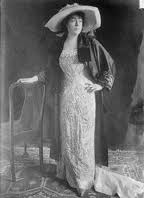
Doesn’t really sound like the activities of a woman who didn’t fit into society, does it? Listen to the podcast for the details of this time in her life, but at some point, Margaret and J.J. separated. They would never divorce, but live together they could not. J.J. was a workaholic, and Margaret, quite busy with her own endeavors as well as the travel (which she adored)- she had outgrown Denver and housewife duties. We name drop big time when we discuss the circles she traveled in but at this point Margaret was dividing her time between Newport, Europe and Denver living large and in charge where ever she went.
Yadda Yadda…she ends up on the Titanic.
Margaret’s actions on that fateful voyage were the stuff movies are made out of. She did help people in her lifeboat, she did attempt to get the lifeboat to return to see if there were survivors, she did row (as did other woman in the lifeboat),she did share her clothing, she was level headed…stripping down to almost nothing, cracking jokes and singing bar songs? Prolly not. But Margaret had spent her life helping people, she was smart and knew how to take command of a situation- those skills all would come into play during the hours in Lifeboat #6.
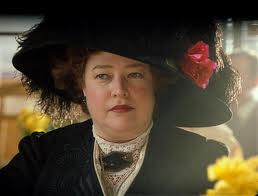
Once rescued by the Carpathia hours after the Titanic sank, Margaret and her caring ways really sprang into action! No resting in First Class for this woman, she was tending to the needs of all the recued passengers and shaking down the one’s that were traveling on the Carpathia. By the time they docked in New York, she had plans in place to keep track of -and get promised funds to- survivors; she had thousands pledged and plans to get more. With a heart bigger than her hat, she made sure that blame was placed properly, and heroism rewarded.

After Titanic, presenting gifts of thanks to the Captain of The Carpathia
In the years following the Titanic portion of her life, Margaret continued to travel, was deep in Newport society, attempted to run for a state Senate position, continued to be an advocate for those who she felt needed one, and never stopped learning. She died at the age of 65 in 1932 while in New York studying acting.
Margaret Brown was a multidimensional, big hearted, smart woman with charm and personality. The myths that surround her life, while entertaining, are not nearly as fascinating as the real life of this remarkable woman.
Time Travel With The History Chicks
Books! The first one we loved a lot, had so many,”Wow! She was a rockstar! Who knew!?” moments for us:
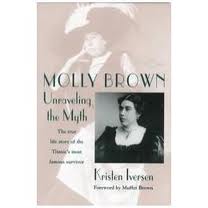
Molly Brown: Unraveling the Myth by Kristen Iversen
The second is a kids’ book, but we thought it did a fun job of telling her philanthropic story (and the photos were terrific):
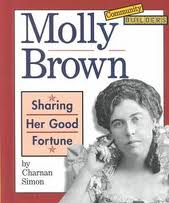
Molly Brown: Sharing Her Good Fortune by Charnan Simon
We love our museums! If you are in Denver, check out the Molly Brown Museum which is in the former Brown home. And a related blog with some really wonderful posts, Between the Lions.
Near Hannibal? The Molly Brown Birthplace and Museum will show you where she began her adventure and developed the strong character that would propel her through life.
There is a brand new… museum? Theme establishment? Convention center? Birthplace of The Titanic?Not quite sure what it is exactly, but it’s pretty cool looking and sits where the Titanic was built in Belfast, Ireland. Titanic Belfast
Curious about Leadville? We were and found lots of answers here!
What about mining Ghost Towns of Colorado? This site is very fun to poke around on, Coloradopast.com, they have pictures of how the Little Johnny Mine looks today, as well as other signs of Colorado’s past. Links to some other Ghost Towns in the US, and lots of beautiful regional photography as well.
Ok, we carry on about how painful this was for us to watch, but you don’t have to believe us! You can experience the same pain (now that you know the real story of her life):
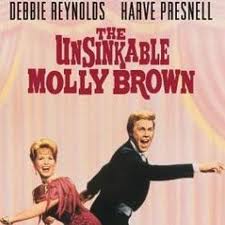
The Unwatchable Molly Brown
As always, music comes courtesy of Music Alley. Visit them at Music.mevio.com
by The History Chicks | Feb 12, 2012 | Shownotes
Welcome back!
At the end of last season ( not that long ago, mere weeks) we never wrapped things up in a nice neat little package. Sorry about that! One of us had family to visit in New England, and the other needed to breathe for a bit without posting deadlines looming. Plus she had a castle to build.
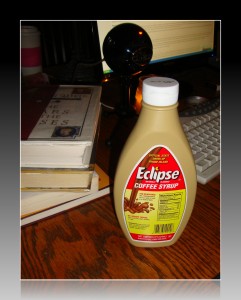
Beckett's requested gift from New England: Coffee Syrup, the official drink of Rhode Island

How one of us has been using the hiatus.
But we got back together in the House of Wood the other day and caught up with our lives. We also finalized plans for the ten full length episodes of Season Three, and left ample room for minicasts sprinkled throughout.
We are VERY excited! We discuss some upcoming plans on this podcast, as well as sharing some stories that happened behind the scenes.
On to Season Three!
We can’t tell you who made the Season Three list, but we can remind you that, as promised, we will begin with a series on the Tudors! Also, as voted upon in our Guaranteed Content Poll, we will discuss the Romanovs at some point during the season. As for the rest of the ladies- keep an eye out for clues that appear here and on all of our social media pages (facebook, twitter, and googleplus) shortly before we post episodes on this website, Itunes, and now, Stitcher!
You are just going to have to trust us, Season Three will be fun and we are thrilled to have you along for the ride!
Thank you (again and again and again) for listening!
Beckett and Susan
by The History Chicks | Jan 26, 2012 | Shownotes, Special
The only history that we look at in this episode is the history of the music we have chosen for Seasons 1 & 2! During each episode we try to pair music with the woman that we are discussing. Sometimes we shoot for a mood, a period tone, a literal reference… and sometimes, we pick a piece of music just because it makes us smile.
If you have never listened to the podcasts all the way through to the very end of the last musical selection, you may want to go back. We have been known to tuck outtakes in there!
For this podcast we have chosen some of the music that listeners liked the best from the past year, and hope you enjoy it as well!
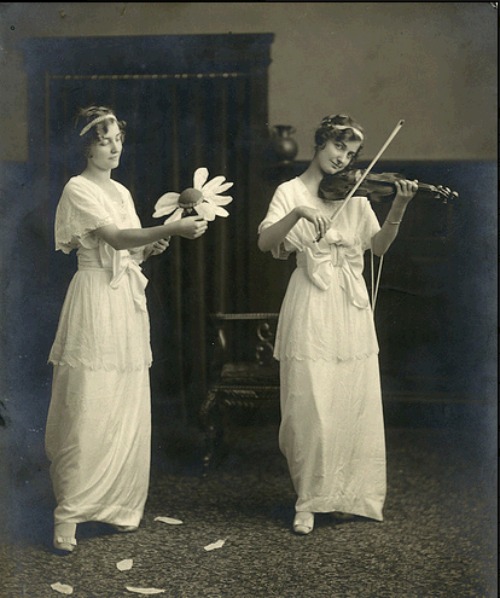
Playlist:
1. “Cookin’ at Home” by Rick Fink and his Gas House Gorillas
From Episode 15 : 1950s Housewives
2. “Black Coffee” by Stefanie
FROM: Episode 18 : Ella Fitzgerald
3. “Daughters of History” by Morning Spy
From : Episode 09 : Gilded Age Heiresses
4. “Under Paris Skies” by Phoebe Legere
From Minicast: Sophie Blanchard
5. “Cool Kids” by Natalie Walker
From Episode 8 : The Mrs Astor
6. “Worth The Fight” by Marie Hines
From Episode 16 : Mary Wollstonecraft
7. “The Killer in Me’ by Amy Speace
From Episode 5 : Lizzie Borden
8: “Most Popular Girl in the World” by Ari Shine
From Episode 11 : Queen Victoria
9. “Keep on the Path” by Mystery Body
From Minicast : Red Riding Hood
10: “Straighten Up and Fly Right” by Jerry Costanzo
From Episode 18 : Ella Fitzgerald
11. “It Was Meant to Be” by Clayton
From Episode 19: Madame de Pompadour
12. “Pillsbury Cookie Dough” by Paul and Storm
From Minicast : Betty Crocker
Please visit musicalley.com to buy songs or to read more about the featured artists.
(And if you’re getting married, wouldn’t “It was Meant To Be” be the BEST first-dance song? )













































